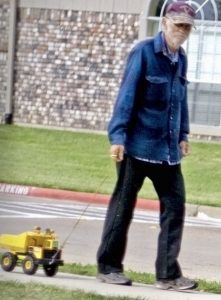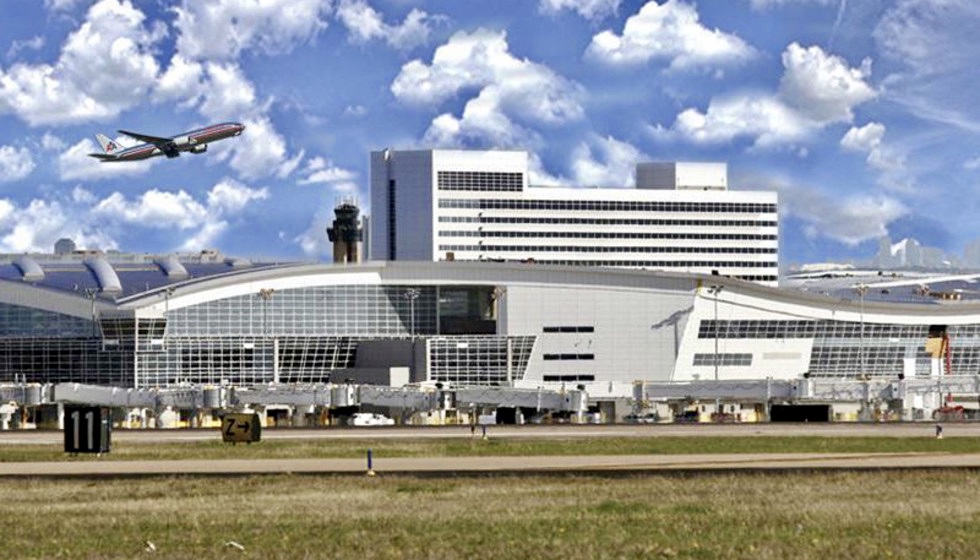One day, shortly after we relocated to Texas, I was driving from Keller to Grapevine on FM 1709 when I noticed an elderly man walking slowly down the sidewalk. Behind him he dragged a dog. I had to do a double take to be sure the dog was a stuffed toy and not real.
I saw him many times in my crosstown journeys from Keller to Southlake or Grapevine, and one day in Roanoke. I never knew anything about him except that he was a tad scruffy and always had either a stuffed dog or toy truck tagging along behind him.
I never gave Mr. Toy Man much thought until now, while digging into the history of the region for a more in-depth understanding of how the area was settled. When I came across several articles about him I wanted to know more, so I did some research.
Lesley Allen Scribner will be remembered by most as a kind man who once gave a crying child a stuffed bunny rabbit to quiet his wails, or the countless other times he brought joy to children through toys. But Mr. Toy Man had a sad and dark past.
The events in this post are a recount of his life from various news articles as Mr. Scribner is no longer with us, and therefore can’t speak for himself. He was a simple man who, along with his five brothers, grew up in what people called Shantytown, an off-the-grid section of north Southlake located on land which is present day Bob Jones Park.
The Scribner family inhabited Shantytown, a camp of trailers, shacks, and trash piles for most of their lives and could often be spotted tramping down to Grapevine Lake to fish. Other times, he and his brothers were seen, shotguns over their shoulders, trekking to trade at the local flea market, or busy hanging hogs for slaughter from trees on their property. The decades-old chain marks can still be found on the lower branches of certain trees in Bob Jones Park.
Mr. Scribner dropped out of school around age 13, not long after he saw his father get killed by a car. Some say Mr. Toy Man was “…mentally disabled…about the 12-year-level.” But he was certainly “capable enough” to care for himself and his family, affording them the basics.
The “Dark Side.” The story goes that in March 1990, Scribner sat on the front porch of his little wooden house drinking beer with Joseph Opry, who lived in a bus up the road. What caused a fight between the two no one knows, but Scribner went inside and brought out his shotgun. He slapped Opry upside the head with it and Opry fled.
When the Southlake police arrived they ordered Scribner to come out of the house, but Scribner’s wife said he refused, so she invited the police in. According to the police report, Officer Robert McAmis, one of the officers on the scene, saw Scribner on the bed with his shotgun leveled at the door. McAmis fired first and ducked, narrowly escaping Scribner’s shotgun blast.
Simon Salinas, a hog farmer who lived across the road from Shantytown remembered the incident differently. He claimed that Scribner only shot his gun once that day and it was up into the air as Opry fled the scene. The only gunfire Salinas heard came from McAmis’s semiautomatic as he shot Scribner. He sustained gunshot wounds to his elbow, leg, and through the chest.
Scribner left the hospital weeks later, pleaded guilty to beating Opry, and says he shot at McAmis. They gave him 10 years probation. To this day, Salinas swears Scribner was innocent of shooting at McAmis.
One by one, the Scribners passed away to age or illness. Lesley Scribner’s wife died of diabetes and his only child, a daughter, died of cancer in 2005. Left completely alone, Scribner began to wander around the area where he always lived, refusing the room Salinas offered him in his home. For his remaining years, rumor said Scribner had been bunking with a man named “Blackjack” in a house off of Bob Jones Road near the park.

January 11, 2010. Early in the morning while walking on busy US Route 26, Scribner wandered into the headlights of an Infiniti and was killed, like his father and his grandfather before him. He was 72.
William Tate, then mayor of Grapevine, spoke at Scribner’s funeral to hundreds of Scribner’s fans and friends. He talked of Scribner’s life from youth to his transformation as “Toy Man,” but did not mention in his eulogy anything about that day in 1990—Opry or Officer McAmis.
Mayor Tate later explained that he feared spoiling a legend. “There’s good in us and there’s some bad in us,” he said. For Scribner, “the good came at the end, and that’s how he’ll be remembered.”
Most people don’t know how hard a life he had. They just saw him pulling the toy.
Unfortunately, this is the only photo I could find of Mr. Toy Man, Lesley Allen Scribner.



